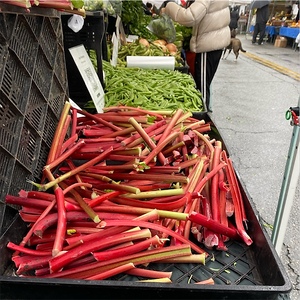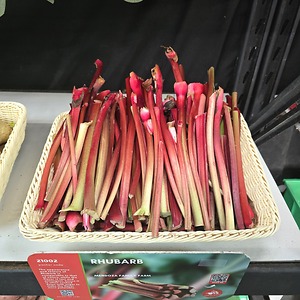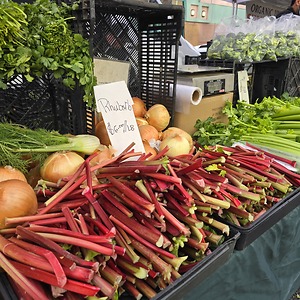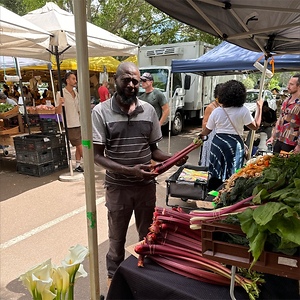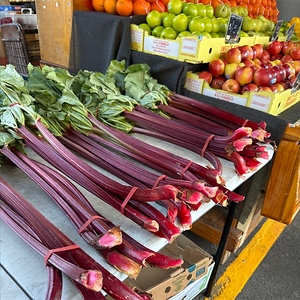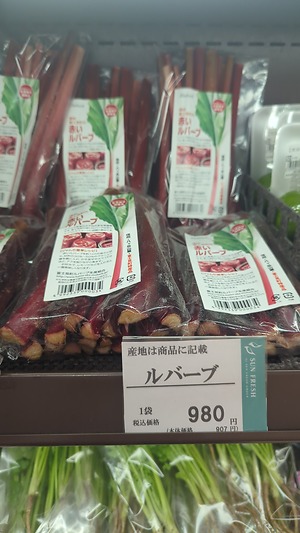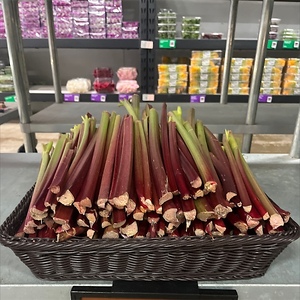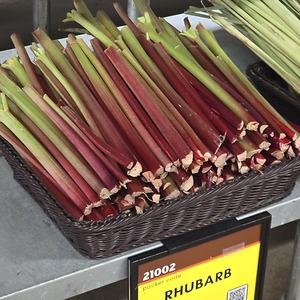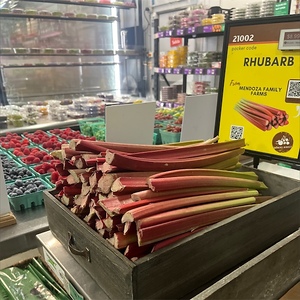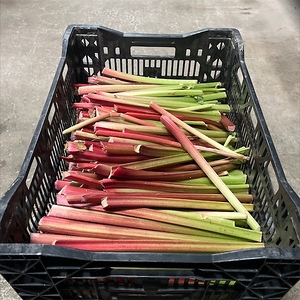

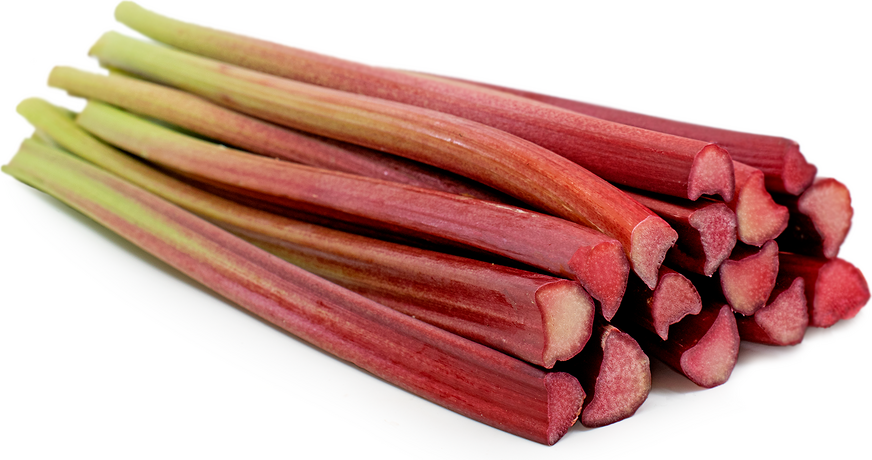
Rhubarb
Estimated Inventory, 20 lbs : 0
Description/Taste
Rhubarb is the edible stalk portion of the rhubarb plant. The stalks average 20 to 40 centimeters long, and range in color from light pink to ruby red, or even shades of yellow or green. The appearance and texture of Rhubarb is comparable to that of celery, while the flavor is tart and astringent, hence it is often cooked down with sugar to make the flavor more palatable. Only the stalks of the rhubarb plant are edible as the roots and leaves are TOXIC with no safe culinary use. This is said to be due to a high concentration of oxalic acid, an organic poison and corrosive found in many plants, but in considerably large amounts in Rhubarb leaves. Rhubarb is traditionally cultivated in two ways: field or hothouse grown. Field-grown rhubarb typically has dark red stalks and green leaves, while hothouse rhubarb produces pink or light red stalks with yellow leaves.
Seasons/Availability
Rhubarb is available in the spring through summer and early fall.
Current Facts
Garden Rhubarb is scientifically named Rheum rhabarbarum, and is a member of the buckwheat family. Rhubarb is botanically a vegetable, but because it is most often cooked down with sugar for pies and jams, it is thought of as a fruit and is nicknamed the pieplant. Rhubarb was even classified by a New York State Court in the 1940s as a fruit for taxing purposes, allowing imported rhubarb to pay a smaller duty. There are over 100 different species of rhubarb, most of which are hybrids, with varieties varying in color, taste, yield, harvest time, and medicinal value.
Nutritional Value
Rhubarb is low in carbohydrates, high in vitamin C, B-Complex vitamins, fiber, calcium, and potassium, and is said to speed up metabolism and aid in weight loss. It also provides a fair amount of vitamin K, which is beneficial for bone health, and has been linked to treatments of Alzheimer's disease thanks to its potential to limit neuronal damage in the brain.
Applications
Rhubarb is used in cooked applications, and although it may be prepared as a vegetable, it is more often featured in sweet recipes like pies, cobblers, and jams, and is commonly paired with strawberries. Slice Rhubarb as you would celery and cook down with sugar into a chutney, or toss with apples or strawberries, sugar, and spices, and bake into a pie or crisp. Cooked and sweetened Rhubarb can also be combined with orange zest and mixed into softened butter to make a spread. Rhubarb may be used in soups, stews, or other savory dishes where its naturally tart flavor counterbalances other rich or sweet ingredients. Try quick-pickling Rhubarb slices in vinegar, sugar, and salt, and pairing in a salad with goat cheese and white asparagus. Stronger-flavored meats like game, quail, and duck stand up well to the tartness of Rhubarb, and may be served with a Rhubarb puree or jam. Rhubarb should be wrapped and stored in the refrigerator for up to a week, or cut and frozen for up to a year.
Ethnic/Cultural Info
Rhubarb has been used since 2700 BC in Chinese culture for trade and medicinal purposes. Emperor Wu of the Liang dynasty is said to have used Rhubarb to cure his fever. In 1815 it was inadvertently discovered at the Chelsea Physic Garden that 'forcing' rhubarb, or keeping it in the dark, would cause the plant to produce rapidly elongated leaves and stalks as well as suppress chlorophyll production, creating a sweeter stalk.
Geography/History
Although technically a vegetable, in 1947 the United States Customs Court in Buffalo, New York, ruled Rhubarb to be a fruit because it is most commonly used in sweet applications. This cost-effective act allowed imported rhubarb to pay a smaller duty than if it was a vegetable. Rhubarb was first used as a food plant in 1778 in Europe and is recorded to have been first grown in the united States in Maine between 1790-1800.
Recipe Ideas
Recipes that include Rhubarb. One



